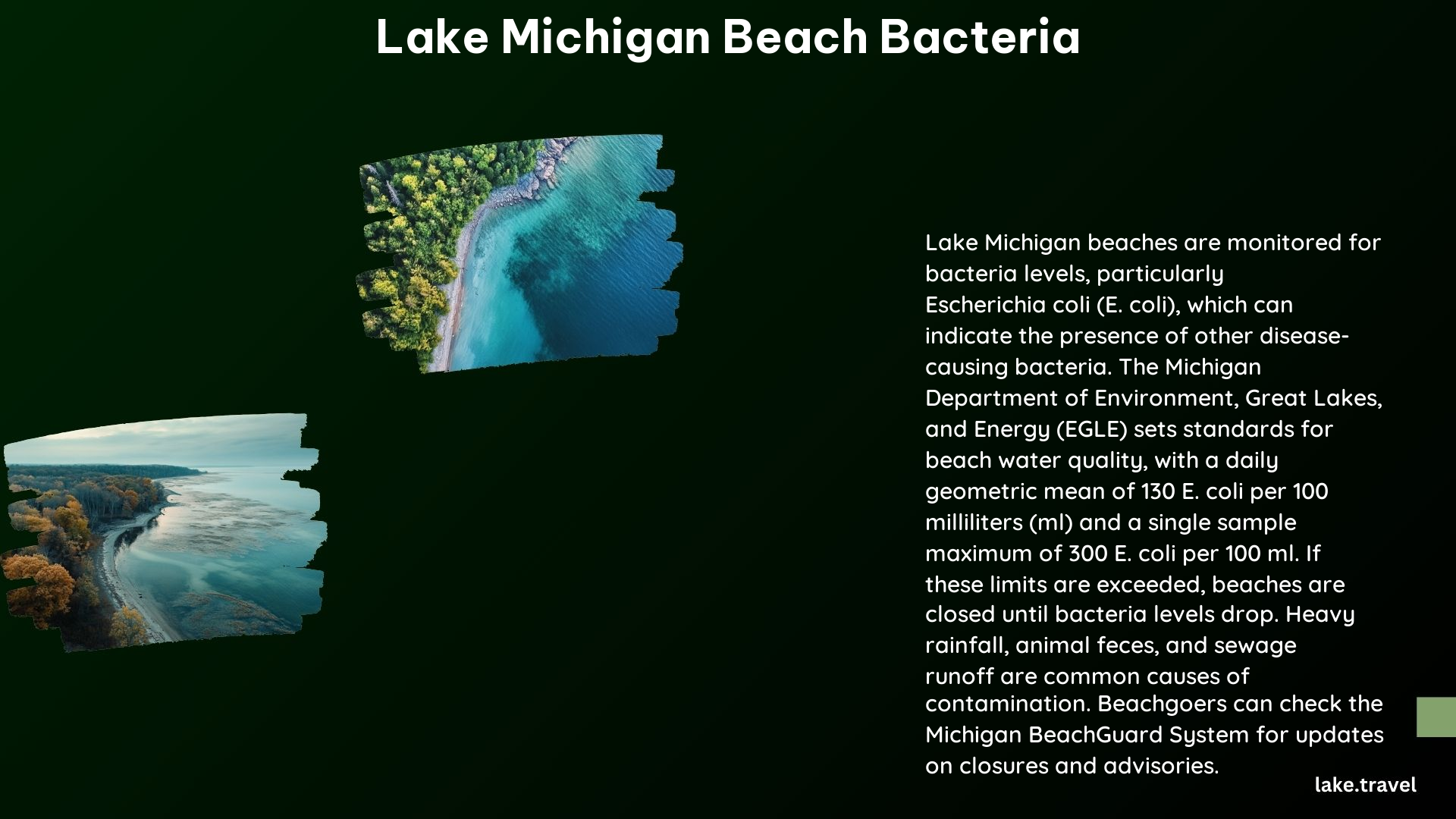Lake Michigan, one of the Great Lakes, is a popular destination for beachgoers and water sports enthusiasts. However, the lake’s water quality can be affected by various factors, including bacterial contamination. This guide provides an overview of the primary sources of E. coli contamination, how health officials determine if the water is safe for swimming, and the health risks associated with swimming in contaminated water.
Primary Sources of E. coli Contamination

E. coli bacteria are found in the intestines of warm-blooded animals, including humans. The primary sources of E. coli contamination in Lake Michigan beach water include:
- Animal Feces: Animal waste from pets, wildlife, and farm animals can enter the water through storm drains, runoff, and sewage overflows.
- Sewage and Wastewater: Malfunctioning wastewater treatment plants, sanitary sewer overflows, and combined sewer systems can release untreated sewage into the lake.
- Storm Water Runoff: Heavy rainfall and snowmelt can wash pollutants, including bacteria, into the lake through storm drains and runoff.
- Septic Systems: Improperly maintained septic systems can leak bacteria into the groundwater, which can then enter the lake.
Determining Safe Swimming Conditions

Health officials monitor Lake Michigan beaches regularly to ensure the water is safe for swimming. Here’s how they determine if the water is safe:
- Water Sampling: Water samples are collected from the lake, typically one foot below the surface, and analyzed for E. coli bacteria.
- E. coli Levels: The daily geometric mean of E. coli bacteria must be below 300 per 100 milliliters for the water to be considered safe for swimming. If the level exceeds 130 E. coli per 100 milliliters, the beach may be closed.
- Monitoring Frequency: Beaches are monitored at least once a month, with a minimum of five sampling events within a 30-day period.
Health Risks Associated with Swimming in Contaminated Water
Swimming in Lake Michigan beach water contaminated with E. coli bacteria can pose health risks, particularly for:
- Children, Elderly, and Immunocompromised Individuals: These groups are more susceptible to illnesses caused by E. coli.
- Gastroenteritis: The most common illness associated with swimming in contaminated water, characterized by symptoms like nausea, vomiting, stomachache, diarrhea, headache, and fever.
- Other Infections: Swimming in contaminated water can also lead to ear, eye, nose, and throat infections.
Precautions and Safety Measures
To minimize the risks associated with swimming in Lake Michigan beach water:
- Check Beach Advisories: Before swimming, check the latest beach advisories and closures on the Michigan BeachGuard System or the Indiana Department of Environmental Management’s (IDEM) BeachAlert Monitoring and Notification System.
- Avoid Swimming After Heavy Rainfall: Rainfall can wash pollutants into the lake, increasing bacteria levels.
- Choose Swimming Sites Wisely: Opt for swimming sites with good water circulation and avoid areas with visible discharge pipes or urban runoff.
- Practice Good Hygiene: Shower after swimming, wash hands frequently, and avoid swallowing lake water.
By understanding the sources of E. coli contamination, how health officials determine safe swimming conditions, and the health risks associated with swimming in contaminated water, you can take necessary precautions to enjoy Lake Michigan’s beaches safely.
References:
- https://www.woodtv.com/news/oceana-county/high-e-coli-levels-trigger-water-contact-advisory-at-lake-michigan-beach/
- https://www.lakecountyil.gov/2385/Beach-Monitoring-and-Advisories
- https://www.bridgemi.com/michigan-environment-watch/swim-your-own-risk-high-e-coli-count-closes-nine-michigan-beaches
- https://www.in.gov/idem/lakemichigan/lake-michigan-beach-monitoring-and-notification-program/beach-water-contamination-and-your-health/
- https://www.michigan.gov/egle/about/organization/water-resources/beaches/about-beach-monitoring
